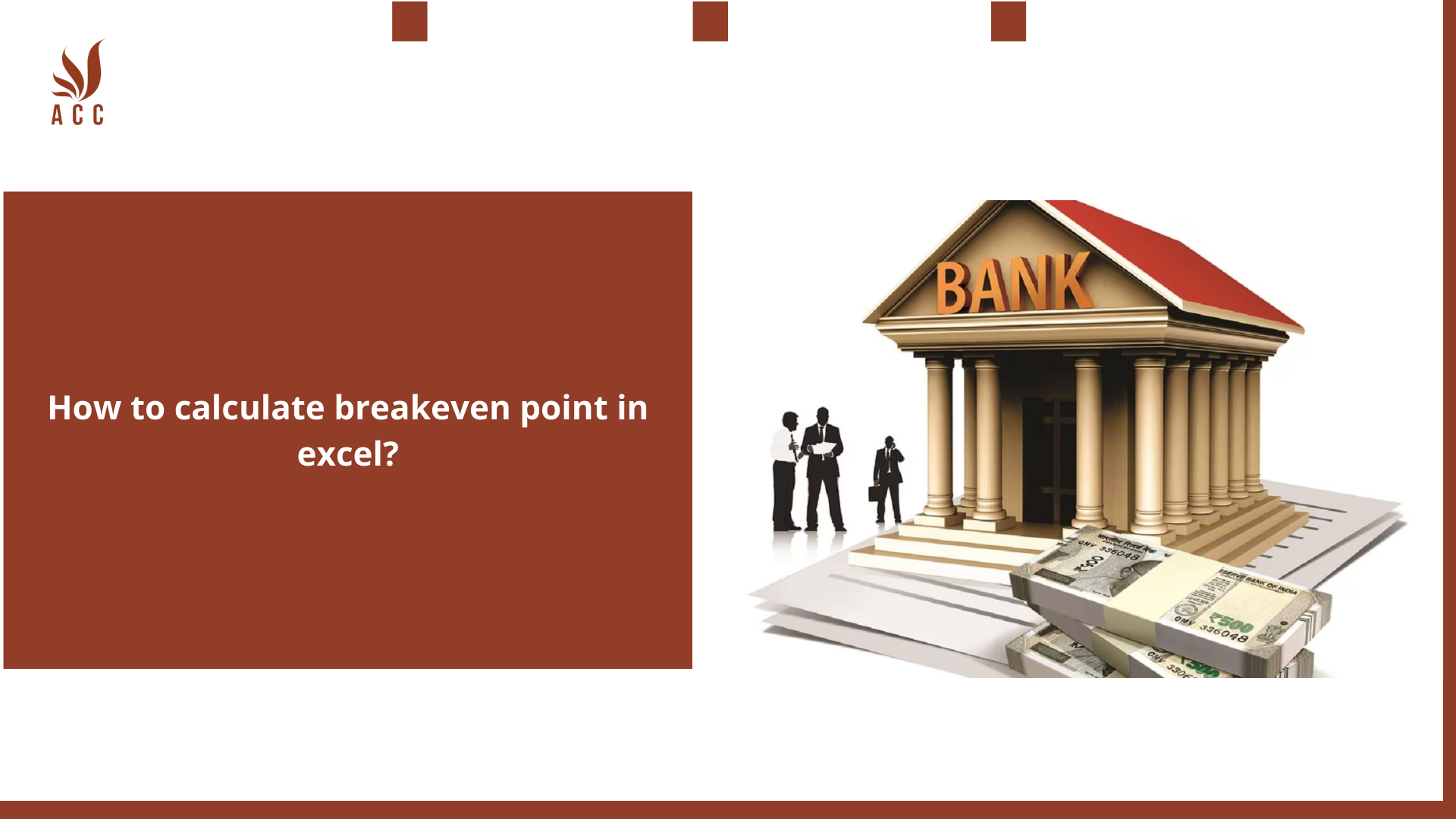
1. How to calculate breakeven point in excel?
In the world of business, understanding the art of break-even analysis is paramount. This crucial calculation provides you with the insights necessary to determine how many units of a product you must sell to reach the break-even point – the juncture where your profits neither rise nor fall, effectively resting at a solid zero dollars.
But what happens after the break-even point? This is where the real magic begins. Every additional unit you sell becomes a stride into the realm of profitability. In this article, we will delve into the intricacies of break-even analysis and demonstrate how to perform it using a simple formula. So, let's embark on our journey to master the science of break-even analysis.
2. Understanding Break-Even Analysis
To perform a break-even analysis, we rely on the following straightforward formula:
Break-Even Point = Fixed Cost / (Selling Price Per Unit – Cost Per Unit)
Example: How to Perform Break-Even Analysis in Excel
Let's illustrate this concept with a practical example. Imagine Ty's dream of opening a cookie shop. The initial investment, or the fixed costs, includes the equipment purchase and the cookie ingredients, summing up to $1,000.
For each cookie he bakes, it costs him $1, and he plans to retail them for $5 apiece. The burning question: How many cookies does Ty need to sell to break even? To find the answer, we turn to Excel.
Step 1: Setting up the Spreadsheet
In Excel, input Ty's fixed costs, selling price per unit, and cost per unit as shown below:
- Cell B1: $1,000 (Fixed Costs)
- Cell B2: $5 (Selling Price Per Unit)
- Cell B3: $1 (Cost Per Unit)
Step 2: Calculating the Break-Even Point
Now, let's calculate the number of units Ty must sell to reach the break-even point. In cell B5, input the following formula:
=B1 / (B2 - B3)

With this formula in place, Excel will reveal that Ty must sell 250 units to achieve a profit of precisely zero dollars.
Step 3: Exploring Further
But why stop at the break-even point? Let's go deeper and calculate the total revenue, total cost, and total profit Ty will earn by selling 250 units.
- Cell B6:
=B5 * B2(Total Revenue) - Cell B7:
=B1 + (B5 * B3)(Total Cost) - Cell B8:
=B6 - B7(Total Profit)
The results will be as follows:

- Total Revenue: $1,250
- Total Cost: $1,250
- Total Profit: $0
3. The Power of Break-Even Analysis
Now that we've deciphered the break-even point and its financial implications, let's explore the flexibility of this tool. By adjusting the selling price per unit, you can observe how it influences the break-even point.
For example, if Ty decides to change the selling price per unit to $6, the spreadsheet will reveal the following:

- The break-even point drops to 200 units.
This shift makes sense; when the selling price per unit increases, the profit margin per cookie expands, requiring Ty to sell fewer cookies to reach the break-even point.
Feel free to experiment with the values in cells B1, B2, and B3 to witness how changes in pricing affect the break-even point. It's this ability to adapt and strategize that empowers businesses to navigate the intricate world of break-even analysis, a tool that, when harnessed effectively, can make or break a business's success.
4. Why should professionals use ACC Law Firm's capital Service?
-
Expertise in Legal Matters: ACC Law Firm specializes in legal services, providing professionals with access to experienced attorneys who can offer valuable legal guidance. Whether it's contract negotiations, intellectual property issues, employment matters, or any other legal concern, their expertise can be invaluable.
-
Tailored Legal Solutions: ACC Law Firm understands that every professional's needs are unique. They can customize their legal services to address the specific challenges and opportunities faced by professionals in different fields.
-
Risk Mitigation: Legal issues can pose significant risks to professionals and their businesses. ACC Law Firm can help identify and mitigate these risks, reducing the potential for costly legal disputes or compliance issues.
-
Resource Optimization: Professionals can save time and resources by outsourcing their legal needs to ACC Law Firm. This allows them to focus on their core competencies and business objectives, while leaving legal matters in the hands of professionals.
-
Access to a Network: ACC Law Firm may have a network of legal experts and professionals in various fields, which can be beneficial for clients seeking connections and advice beyond just legal services.
Q&A
Question 1: What is the concept of the breakeven point, and why is it important for businesses?
Answer 1: The breakeven point is the level of sales or revenue at which a business covers all its costs, resulting in neither profit nor loss. It's a crucial concept for businesses because it helps them determine the minimum level of sales needed to sustain their operations and make informed decisions about pricing, production, and profitability.
Question 2: How can businesses calculate their breakeven point, and what are the key components of this calculation?
Answer 2: Businesses can calculate their breakeven point using the following formula:
Breakeven Point (in units) = Fixed Costs / (Selling Price per Unit - Variable Cost per Unit)
Key components of this calculation include fixed costs (e.g., rent, salaries), the selling price per unit, and the variable cost per unit (costs that vary with production or sales).
Question 3: Why is it important to know the breakeven point in units and dollars, and how can this information be used to make strategic decisions?
Answer 3: Knowing the breakeven point in both units and dollars allows businesses to:
-
Set pricing strategies: Understanding how many units need to be sold to cover costs helps businesses determine appropriate pricing strategies to achieve profitability.
-
Manage costs: Businesses can assess the impact of cost reductions on profitability and make informed decisions to improve their cost structure.
-
Evaluate product lines: It helps in evaluating the performance of different products or services and deciding which ones to invest in or discontinue.
-
Plan for growth: Businesses can set sales targets and expansion goals based on breakeven analysis to achieve desired profit levels.
Question 4: What are some limitations and challenges associated with breakeven analysis, and how can businesses address them?
Answer 4: Some limitations and challenges of breakeven analysis include:
-
Assumptions: Breakeven analysis relies on certain assumptions, such as constant selling prices and costs, which may not hold in a dynamic business environment. Businesses should regularly review and update their assumptions.
-
Complex cost structures: In businesses with complex cost structures, it can be challenging to accurately allocate costs to fixed and variable categories. Businesses should categorize costs as accurately as possible.
-
External factors: Economic conditions, competition, and market demand can impact breakeven points. Businesses should regularly monitor external factors and adjust their strategies accordingly.
-
Multiple products or services: Businesses offering a range of products or services may have different breakeven points. It's important to analyze each product or service individually.
By recognizing these limitations and addressing them, businesses can use breakeven analysis as a valuable tool for decision-making and financial planning.
Nội dung bài viết:






Bình luận